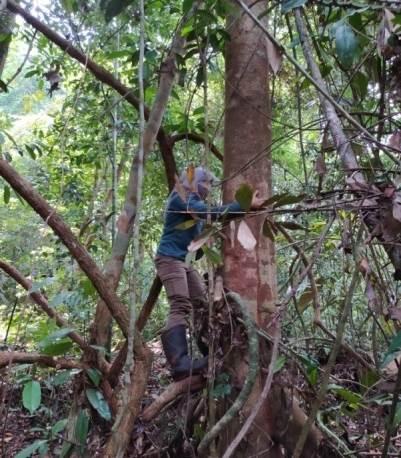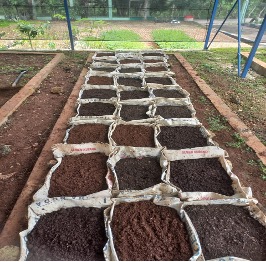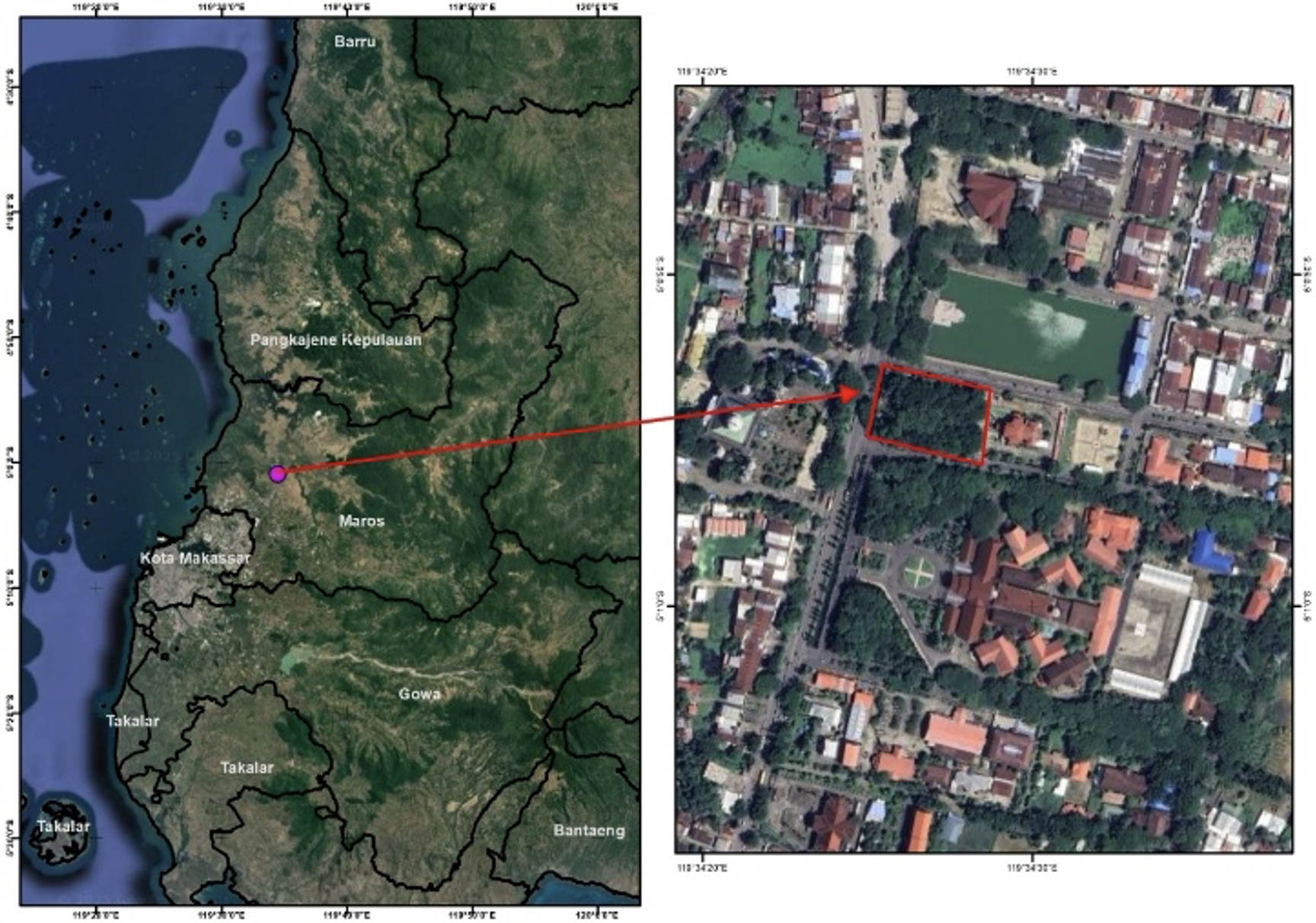Soil Mesofauna Response to Cover Crops and Mycorrhizal Inoculated Plantation on Limestone Quarry Revegetation
Abstract
Cover crops establishment followed by mycorrhizal inoculated tree plantation accelerate limestone quaryy restoration. Soil mesofauna is a useful indicator for assessing biodiversity recovery, as they are sensitive to human disturbance and involved in ecological processes. In this research, soil mesofauna presence used to evaluate limestone quarry restoration by cover crops and mycorrhizal inoculated tree esatblisment. Soil mesofauna are measured using individual density, species diversity, richness and important value. The study was conducted in four types of areas on limestone postmining lands are open areas/natural conditions without planting, cover crop area, non mycorrhizalinoculated plant area and mycorrhizal-inoculated plant area. The result showed The higher individual density, diversity and species richness of soil mesofauna on cover crops and mycorrhizal inoculated plant area than other areas are indicators of limestone quarry restoration rate. Furthermore the presence of Formicidae family that dominated on cover crops and mycorrhizal inoculated plant area, and emergence of Acari group only on mycorrhizal inoculated area also an indicator of limestone quarry restoration.
Copyright (c) 2016 Jurnal Wasian

This work is licensed under a Creative Commons Attribution-NonCommercial 4.0 International License.
Copyright and License
All articles published in Wasian Journal are the property of the authors. By submitting an article to Wasian Journal, authors agree to the following terms:
-
Copyright Ownership: The author(s) retain copyright and full publishing rights without restrictions. Authors grant the journal the right to publish the work first and to distribute it as open access under a Creative Commons Attribution 4.0 International License (CC BY 4.0).
-
Licensing: Articles published in Wasian Journal are licensed under a Creative Commons Attribution 4.0 International License (CC BY 4.0). This license allows others to share, copy, and redistribute the material in any medium or format, and adapt, remix, transform, and build upon the material for any purpose, even commercially, provided that proper credit is given to the original author(s) and the source of the material

This work is licensed under a Creative Commons Attribution 4.0 International License. -
Author's Rights: Authors are permitted and encouraged to post their work online (e.g., in institutional repositories or on their website) prior to and during the submission process, as it can lead to productive exchanges and greater citation of published work.
-
Third-Party Content: If your article contains material (e.g., images, tables, or figures) for which you do not hold copyright, you must obtain permission from the copyright holder to use the material in your article. This permission must include the right for you to grant the journal the rights described above.
-
Reprints and Distribution: Authors have the right to distribute the final published version of their work (e.g., post it to an institutional repository or publish it in a book), provided that the original publication in Wasian Journal is acknowledged.
For the reader you are free to:
- Share — copy and redistribute the material in any medium or format for any purpose, even commercially.
- Adapt — remix, transform, and build upon the material for any purpose, even commercially.
- The licensor cannot revoke these freedoms as long as you follow the license terms.
Under the following terms:
- Attribution — You must give appropriate credit , provide a link to the license, and indicate if changes were made . You may do so in any reasonable manner, but not in any way that suggests the licensor endorses you or your use.
- No additional restrictions — You may not apply legal terms or technological measures that legally restrict others from doing anything the license permits.
Notices:
You do not have to comply with the license for elements of the material in the public domain or where your use is permitted by an applicable exception or limitation .
No warranties are given. The license may not give you all of the permissions necessary for your intended use. For example, other rights such as publicity, privacy, or moral rightsmay limit how you use the material.











